Delfzijl 作者: 来源: 发布时间:2021-10-18
一、人口,面积,所属地区
Country Netherlands
Province Groningen
Area
• Total 227.50 km2 (87.84 sq mi)
• Land 133.06 km2 (51.37 sq mi)
• Water 94.44 km2 (36.46 sq mi)
Elevation 1 m (3 ft)
Population (January 2019)
• Total 24,716
• Density 186/km2 (480/sq mi)
Demonym(s) Delfzijler
Time zone UTC+1 (CET)
• Summer (DST) UTC+2 (CEST)
Delfzijl is a city and municipality with a population of 25,651 in the province of Groningen in the northeast of the Netherlands. Delfzijl was a sluice between the Delf and the Ems, which became fortified settlement in the 16th century. The fortifications were removed in the late 19th century. Delfzijl is the fifth largest seaport in the Netherlands, and the largest port in the North East of the country.
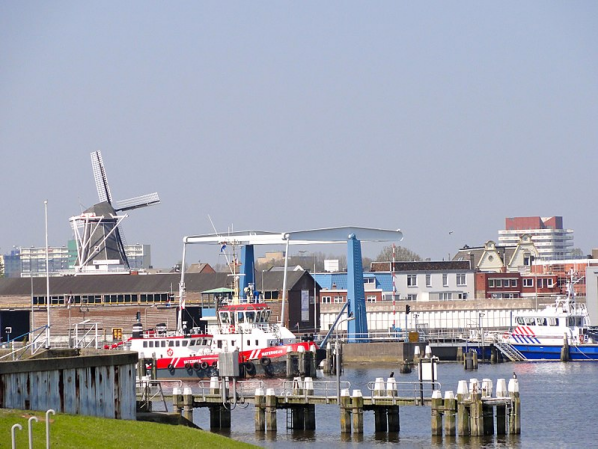
Skyline of Delfzijl in 2011
二、自然地理
Etymology
The name Delfzijl means 'sluice of the Delf'. The Delf was a canal connecting the rivers Fivel and Ems, and is now part of the Damsterdiep. The Dutch verb delven means 'to delve' or 'to dig' and the Dutch noun zijl means 'water outlet' or 'sluice'.
Geography
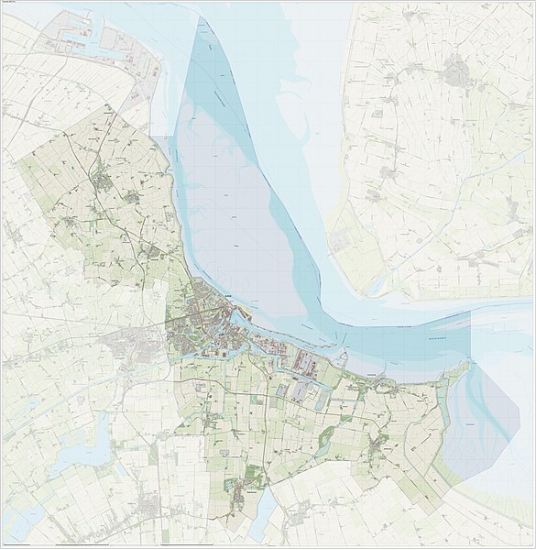
2015 map of the municipality
Delfzijl is located at 53°20′N 6°55′E in the northeast of the province of Groningen, in the northeast of the Netherlands. It is situated on the southwest bank of the Ems estuary, which forms the border with Germany.
Delfzijl is bordered by the Dutch municipalities of Eemsmond (in the northwest), Loppersum (west), Appingedam (west), Slochteren (southwest), Oldambt (south), and by the German municipalities of Emden (east) and Krummhörn (northeast).
The municipality contains the population centres:
Bierum Biessum Borgsweer Delfzijl
Farmsum Godlinze Holwierde Krewerd
Losdorp Meedhuizen Spijk Termunten
Termunterzijl Uitwierde Wagenborgen Weiwerd Woldendorp
Transportation
There are two railway stations in municipality giving frequent service to Groningen and points in between, with connections to other locations:
Delfzijl railway station
Delfzijl West railway station
A branch of the railroad tracks passes through gates in the sea dike to serve the harbor area and near by industries.
The regional airport of Groningen at Eelde serves Delfzijl and the surrounding areas.
Local and regional busses connect Delfzijl to outlying villages and other towns. The large trucking company Lommerts has offices and terminals in Delfzijl harbor area connecting with sea going traffic.
Modern highways link Delfzijl with destinations in Europe, and easy access to inland resort areas near Gieten in Drenthe on weekends. A system of old and new draw bridges manages the flow of traffic across canals and around locks where water level is raised and lowered. Parking space is provided in various places, some of which impose a time limit and require a permit that can be purchased inexpensively. Some parking permits are also valid in other places of The Netherlands and foreign countries.
Delfzijl provides bicycle paths and traffic signals for pedestrians and cyclists. Special permissions and permits apply to small motor bikes not more than 50cc motor displacement or electric power not more than 4 kilowatts traveling not more than 45 kilometers per hour and within the local speed limit on streets and roads where they are allowed. Other permissions apply to larger motorbikes which are usually found with automobile traffic. Many people prefer to walk in Delfzijl which is made possible by reasonable distances, low crime rate, and mild maritime climate that is often cloudy, cool, wet, and windy.
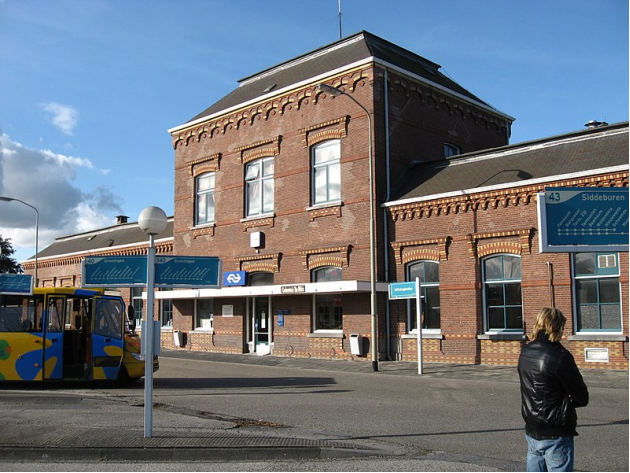
Delfzijl railway station in 2009
三、经济发展和规模
Total » Total » A-U All economic activities - Delfzijl en omgeving (CR) - GDP, volume changes
-1.70 % in 2019
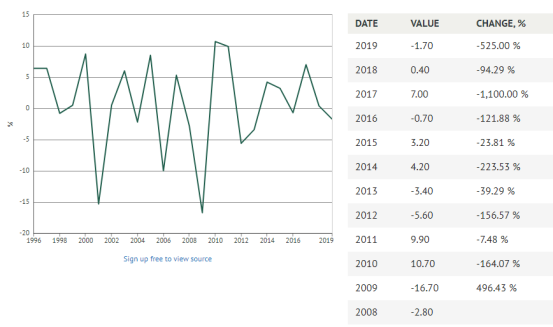
Total » Total » A-U All economic activities - Delfzijl - Natural gas, delivered
690,158.00
1,000 m3 in 2018
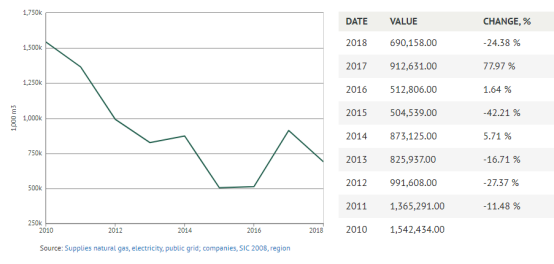
Total » Total » A-U All economic activities - Delfzijl - Electricity. delivered
1,364,300.00
1,000 kWh in 2018
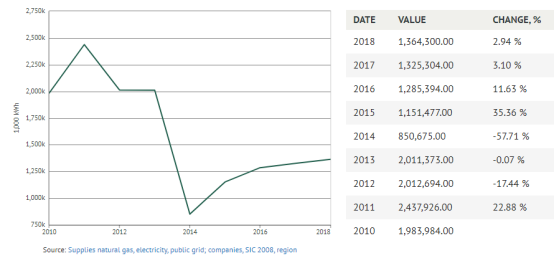
四、产业特点/重点项目
The Port of Delfzijl is the fifth biggest seaport in the Netherlands and the home of an aluminium plant run by the company Aluminium Delfzijl (part of Tata Steel Europe). In 2004 the smelter produced a record 112,400 tonnes of liquid aluminium. The foundry produced 157,700 tonnes of raw product. Natural gas and petroleum fields in the area encourage industries to locate in the industrial zones.
Delfzijl is also known for its chemical industry and a large salt production plant held by AkzoNobel . On the edge of the town lies an industrial site with an area of 3 square kilometers which is one of the biggest employers in the area. This site is responsible for the second largest quantity of exported chemicals in the Netherlands (after Rotterdam), and is known for its major exports of chlorine and related products.
Favorable winds are used to make electricity in modern wind turbines located away from the historical districts. The old wind mills are only used on special occasions.
A modern fresh water shipping canal connects Delfzijl with Groningen City and most of The Netherlands, bypassing the historical canals that are used for recreation. Delfzijl has a strong tradition of seafaring and there is a specialized school to train employees for the shipping industry located nearby in the fresh water port area established in 1930. After some years at sea the graduates are highly regarded and recruited by local industry where they work as factory operators, mechanics, supervisors, or practical engineers. The inland fresh water port is extensive with several canals coming together, making a sheltered loading area and facilities for hauling out smaller ships for refitting and inspections.
Farmlands occupy most of the region producing potatoes, sugar beets, oil seeds, grain, dairy products, cattle and wool making Delfzijl a local market town and adding to the economy. Much commerce occurs with the agricultural center in Veendam that previously operated a chamber of commerce for the region. Building of small ships occurs along modern canals in nearby Winschoten, with rail and ship connections to Germany, adding to the commercial traffic around Delfzijl.
Fishing is done in the shallow seas with some of the boats operating out of Delfzijl and Farmsum harbor where much inland shipping is also handled. An old sea gate at Farmsum was replaced by newer gates nearby leaving a sheltered inland harbor. Low tide exposes extensive mud flats that add to tourism and environmental activities. Delfzijl is a bird sanctuary during high tides that cover the feeding grounds with sea water.
Considerable lumber is imported to supplement domestic supplies. A wide variety of cargoes from all over the world are handled by the port, which also receives visiting navy ships from NATO countries. Delfzijl harbors can accommodate boats of various types as well as small to medium-sized ships. Large ships can be handled in the new Eemshaven port near by at the mouth of the Eems estuary. Together the two harbors are promoted as industrial development areas under the name Groningen Province Sea Ports. The two ports give regular service to north sea petroleum production and staging grounds for new constructions in the north sea fields.
Projects
Projects center Delfzijl
In order to be vital and liveable for the future, we have developed two action plans: The Action Plan Center Delfzijl and the Action Plan Villages - Neighborhoods. With this we want to make the municipality of Delfzijl healthy, beautiful and vibrant again. It addresses existing problems and develops new perspectives in the field of recreation and tourism. For example, Delfzijl wants to become more attractive to residents and visitors, boost small and medium-sized enterprises and create new jobs.
The action plan is the answer to the decrease in the number of inhabitants. Delfzijl has been the fastest-shrinking municipality in the Netherlands for a number of years, but this should not lead to vacancy and deterioration or deterioration, but should instead challenge people to live, work and recreate better with fewer people.
五、风景名胜,景点
1, Schildmeer
Marina, lake, and camping
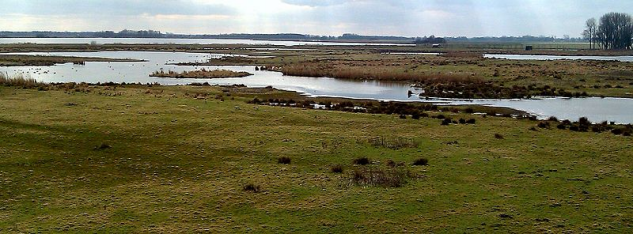
The Schildmeer with riparian lands from the 'Biesterwied' observation tower north of the lake (Tetjehorn Duurswold nature reserve). Biesterwied ("furthest land") refers to the farm that used to be here.
The Schildmeer is a lake located in the Duurswold region in the Dutch province of Groningen between Schildwolde and Overschild . The Duurswold Drainage Canal flows through the lake . The canal De Groeve also starts in the lake .
The lake has an average depth of 1.5 meters and covers an area of 284 hectares. It belongs to the municipality of Central Groningen . Most of the shores of the lake are nature reserves . At Steendam there are facilities for recreation such as marinas and associated activities, a sandy beach, restaurants, campsites and a bungalow park. The Haans lock is located on the south side of the lake, which connects the Haansvaart and the lake for smaller ships and flat bottoms . The south, west and northwest are part of the Midden-Groningen nature development area , which extends to Kolham .
Name
There are several explanations for the origin of the name Schildmeer. A merchandise list of the Werden monastery from the second quarter of the 11th century contains the name Extra Scaldmeda . The exact location of this place is unclear. According to Ter Laan , this term refers to the location of the current village of Overschild in the sense of 'on the other side of the Schildmeer', but other authors have doubts about this. The first mention of the name of the lake is in 1295 in the Bloemhof chronicle , when the continuator speaks of the aqua sive mare Skeld ('the water or more Shield'). The name also passed to the watercourseSchildmaar (the current Duurswold Drainage Canal ). Around 1470, lands outside and within the Schylt , that is to the north and south of Schildmeer and Schildmaar, were distinguished ; in 1544 there were lands over the Schylt . The Schildmeer is still referred to as Schilt or De Schildt on provincial maps from the 17th century . Theodorus Beckeringh 's maps from the years after 1750 show for the first time 't Schilt more and ' t Schilt .
When explaining the name of the lake, the link is often made with the names Scælfremære , Scælfre-mere or Shelfermere, which first appear in an English text from 1022 and in the well - known Anglo-Saxon Chronicle from this period. He refers to part of the former Whittlesey Mere in the English lowland area The Fens . Old English scald or scæld means 'shallow' and sceldu "shallow" (in English: shallow ). The name also occurs with the Wadden channels' t Schild and Scholbalg. According to the linguists Wobbe de Vries and Moritz Schönfeld , however , shield , like the English lake, means 'reed, rush, lis', referring to the many aquatic plants that grew there. Both meanings are not mutually exclusive. Optionally, the word skeld could be derived from the Old High German word skaltan , which means 'to push, to push, (to move a ship)'. A folk etymological explanation states that the word comes from ' shield ' (for protection), where Hellum would then refer to 'helmet' (headgear).
History
The Schildmeer originally consisted of one or two mooring houses that were located in a raised bog area and were connected by the Schildmaar (also known as Schiltmaar or the Schilt ), which was excavated around 1870 into the Afsingskanaal of Duurswold . These multiple stables were much smaller than the current lake. Due to the prevailing southwest wind, the banks calved further and further and a lake oriented in a southwest-northeast direction was created. Peat excavations may have accelerated this process . The original extraction of this peat area probably took place from the village row of Siddeburen- Schildwolde - Hellum . The territory of these villages continued on the other side of the lake, which is also evident from the ditches on both sides of the lake that (in Hellum in particular) were in line. It is also expressed in the name 't Over Schildt for the polder west of the lake and in the village name Overschild . [8] Because the strip allotment persists on both sides of the lake and therefore does not seem to care about the water, it has been argued that the lake must have been created after the allotment, between the 10th and 12th centuries.
The drainage of the lake initially took place via the Schildmaar in the direction of the Slochter Ae and the Fivel, as evidenced by former ditches and channels in the Luddeweer area. Around 1200 the lake was subsequently drained by digging the Garreweerstermaar in the direction of the Damsterdiep; later construction of De Groeve followed . As a result, the water level has probably dropped considerably. Shield, but was apparently dammed, the lift on the shield, but at the level of the Slochtermeenteweg was in 1512 Slochterschiltdam mentioned.
As the peat around the lake continued to mine, the bottom surface collapsed, requiring further drainage. The Woldzijlvest was mainly responsible for these activities . Later, the Slochterzijlvest was established, which interfered with drainage of the areas north of the Schildmaar and south of the (later) Slochterdiep. The Graauwedijk prevented the water from returning to the Schildmeer from higher regions.
In the 18th century, the Kleijne Schilt was created in the southwest of the lake , an inlet to the southwest, in which the island of Vossebult lay. The island, which was about one hectare in size, came into the hands of the noble Polman Gruys family at Garreweer; later the area disappeared and a polder mill was built. Today, this part is part of the nature reserve 'Vossenbult'. Immediately north of the area is a low mound from Roman times and the Middle Ages.
On the west side, opposite Steendam, the bank of the lake ends in a point, which was already called Tetjehorn (Gronings: Taitjehörn or Taitjemui's hörn ) around 1750 . According to the legend, Taitjemui was a female robber knight, who murdered ship crews and seized the cargo. It is also believed that stones from a missing bailey were found at the nearby Schildhuis. There is no concrete evidence for this story. Tetjehorn was also converted into a nature reserve in 2000, which is managed by Staatsbosbeheer .
There are cycle paths around the lake that are part of the Schildmeer tour. In 2009, a high wooden bicycle bridge Schildjer Tilbat was built over the Duurswold drainage canal near the Sans Souci pumping station. The International Dollard Route runs on the south side of the lake . This route reaches the bank at Heerenhuisweg and follows it to Steendam. The Heerenhuisweg and Sans Souci pumping station are named after the Sans Souci mansion built by Lodewijk Hendrik Wijchgel on the lake in 1820 (at the end of Heerenhuisweg), which was demolished in 1952.
2, Muzeeaquarium Delfzijl
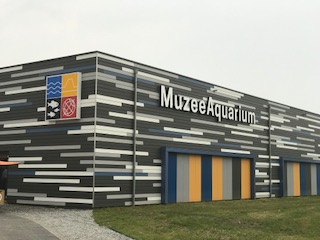
The Muzeeaquarium Delfzijl is a museum in the city of Delfzijl in the Dutch province of Groningen , which focuses on the sea and shipping , in particular of North Groningen near the Ems , the Dollard and the Wadden Sea .
Collections
The collection is divided into a number of areas:
Archeology . Here, archaeological finds from the surrounding area are exhibited, including the showpiece of the museum: the hunebed G5 from 3400 BC excavated in 1982 in Heveskesklooster in the Delfzijlster Oosterhoek . This is the northernmost hunebed found in the Netherlands. The corresponding steenkist from the neolithicum is separately housed in the Hunebedcentrum in Borger .
Geology . This sub-collection includes a replica of a stalactite cave , fossils , crystals , minerals and rocks .
Shells . The Muzeeaquarium has a collection of approximately 15,000 shells, the foundation of which was laid by the collector and amateur malacologist AK Schuitema. Special because of their size are a giant clam and an entemnotrochus rumphii .
Shipping. The sub-collection contains 2300 objects related to shipping around the Ems and the Dollard , the port of Delfzijl (including the history of the chilli nitrate ) and that of Termunterzijl , the Maritime Academy Abel Tasman . A prominent museum piece from this collection is an old 85-kilo diving suit .
Sea aquarium . This is housed in a former bunker from the Second World War and includes tanks in the North Sea and Wadden derived fish , molluscs and crustaceans .
Address: Museu aquarium Delfzijl
Zeebadweg 7, 9933 AV Delfzijl
Phone 31 (0) 596 - 632277
info@muzeeaquarium.nl
3, Strand Paviljoen Delfzijl
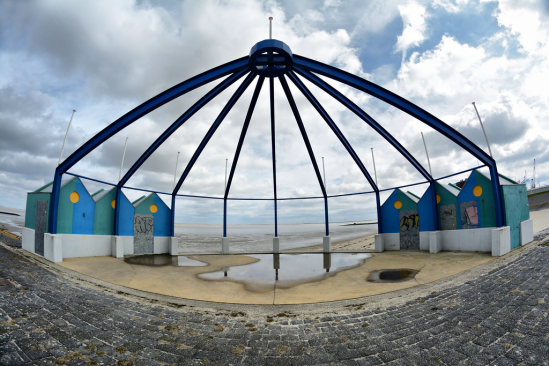
Beach in the Netherlands
六、历史文化
Delfzijl was established at the location where three sluices were connected. In 1317, a sluice was built in the Delf, a canal which is now part of the Damsterdiep. Delfzijl has been the main sea port of Groningen since medieval times.[citation needed]
In 1580, a square sconce and a church were built in Delfzijl. Fortification was expanded with six bastions in 1591. Also In 1591 Prince Maurice of Orange visited the port with a fleet of 150 ships which saw the capture of the city from the Spanish by a combined Dutch and English army. Followoing this an unsuccessful attempt was made in 1594 by Francisco Verdugo to capture the fortress Delfzijl. In 1628 Piet Hein moored his silver fleet at Delfzijl. The first sea battle in the Eighty Years' War was fought nearby in 1658 in the Eems estuary between Dutch forces under Jan Abels and Spanish forces under François van Boshuizen. A fleet of Dutch ships from the West Indies landed here in 1665 under command of admiral Michiel de Ruyter, avoiding the English fleet that was blockading the Dutch coast. The fortification and the sluices were damaged during the Christmas Flood of 1717. In 1813–1814, the French held the city, while it was under siege by the Dutch. The fortifications were removed in 1875, making room for the train station, and leaving one branch of the moat for recreational purposes, with ice skating in some years.
The town was damaged in World War II, and artifacts of the battle can be found in monuments, bunkers, and old armored vehicles usually on display, but disrupted now since 2017 by a major reconstruction of the water front area. Nearby a group of museums attractively landscaped near woodlands and an indoor public swimming pool, an aquarium, and a sea dike, are also affected by the construction intending to make Delfzijl a better tourist attraction after the construction and more secure from sea flooding.
Delfzijl sits at an elevation above low tide, and usually above high tide except for a few days per year. The town is protected by dikes and gates that can be opened to let water out at low tide, and closed to prevent flooding at high tide. When normal draining at low tide is not sufficient water is pumped near Delfzijl at Farmsum in a modern pumping station that replaced the historical old pump house in the 1970s. The possibility of rising sea level is a large concern in Delfzijl, and storms have occasionally splashed water over the sea dikes in recent years causing the dike to be raised starting in 2017.
Traditional industries of grain milling, paper made from straw, and bricks made from clay have given way to newer industries and technologies. Colonial days are remembered in Delfzijl by Indonesian food and a variety of minority groups who are integrated into the community.[citation needed]
On the edge of Delfzijl, and easily approached on foot or by bicycle across new parks and wood lands, the church at Uitwierde with its free standing tower dates from about the year 1200.[14] The church sits on a historic protected artificial mound that dates from antiquity, and was necessary before dikes were built. The church pipe organ dates from 1888 and was moved from Heveskes in 1975. In the area are a few estates and manor houses with historic restaurants of interest as well as numerous farm houses and villages with old churches of historic interest.
Industrial expansion in the 1970s and 1980s displaced old villages of Weiwerd[16] and Heveskes which are remembered in photos and local monuments maintained by previous residents. Foundations of a ruined monastery were discovered in the excavations of Heveskes mound, together with a monolithic tomb dated from 3400 BC which was disrupted about 2200 BC and was displayed in the Aquarium Museum at Delfzijl, until recent developments caused the building to be demolished. The monastery was mentioned in records of 1319, and was destroyed in war in 1586. The village of Oterdum which was built against an older section of sea dike was flooded occasionally by storms and was demolished in the 1970s for raising the dike elevation. Coffins traditionally buried in the old dike were moved to Farmsum, leaving monuments in the enlarged dike to commemorate the village and cemetery. A few Kilometers farther down the coast are the villages of Borgsweer and Termunten that give some idea of the traditional land use before industrial expansion. Nearby at Termunterzijl is located a gate in the sea dike and a small marina inside the fresh water harbor, giving an idea of how Delfzijl looked in the early years.
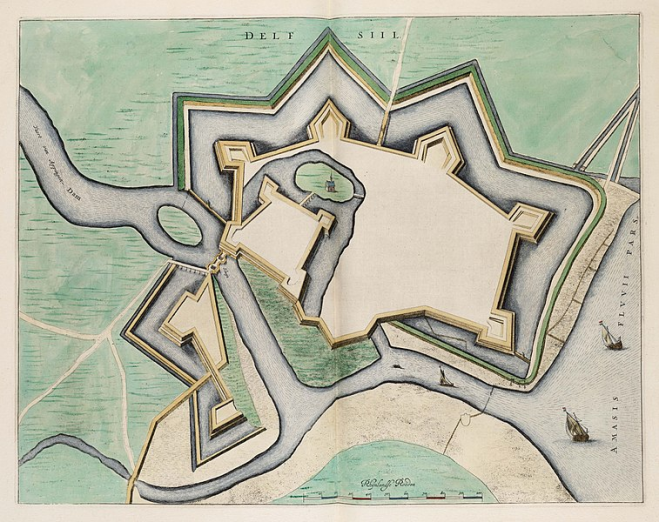
Map of the fortifications of Delfzijl from the Atlas Van Loon (1649)
七、其他信息
-- Delfsail 2021
Next year one of the biggest maritime events in our country will take place: DelfSail 2021, The Legacy of the Seven Seas. Beautiful Tall Ships from all over the world and sailing and motor ships can be seen and experienced in the harbor of Delfzijl from 10 to 13 June 2021. For the most up-to-date information about the event, visit the website of the Delfsail 2021 organization .
-- Events
Every five years the city organises DelfSail,[30] the second-largest sailing event of the Netherlands after SAIL Amsterdam. Part of the sea harbor near the center of Delfzijl is open to public on Sundays and special events when the heavy machinery is not moving and the sea gates are not closed.
Annually the "Pinksterfeesten" (Whitsunfestivities or Pentecost Festival) are organised in the city. Delfzijl is seeing a strong resurgence in the Dutch economy as the physical centerpoint of Energy Valley. This is the result of a strategic collaboration with the German town of Emden on the other side of the Eems Estuary, and North Sea natural gas that comes on shore near Delfzijl.
-- Maritime Delfzijl, fortified settlement with an illustrious past
In recent decades, for example, Delfzijl has become an important industrial port. And before that, Delfzijl was the maritime centre of the northern part of the Netherlands.
-- Art and culture
Churches
In the municipality are a large number of special and old churches.
The churches in Groningen are an important image-defining element in the landscape. Often located high on the mounds, they form a beacon for the traveler. The first stone churches date from the 11th century and are made of tuff from the Eiffel. The first brick churches appeared at the end of the 12th century.
With the passage of centuries, the architectural styles also change from Romanesque, Romano-Gothic, Neo-Gothic to Neo-Classicist. It is noteworthy that the province also contains some typical examples of the Amsterdam School (1930s).
-- Society
Delfzijl has a cultural center near the central wind mill for live performances and films, with additional cultural facilities in Groningen.
Education is available for people of all ages including those who travel to nearby Groningen University.Parents of school aged children participate in school activities several times a year.[vague] Affordable health care is provided to everyone in, clinics, house calls, at a local hospital, and at the Groningen Academic Hospital which was established in 1797.
Government officials are mostly appointed and operate with advice of elected local councils and parliaments in Groningen and The Hague. Authorities for public safety, city services, oversight of industry, harbor control, and management of water levels have a strong presence in Delfzijl and can call on assistance from trained volunteers when needed. Many political parties are active in Delfzijl, with much support given to labor, business, education, religious views, family values, and environmental protection. Small business shop keepers have a large influence on the city. There is much freedom of speech and action for people who are respectful of laws and authorities.
Many activities take place in cafes, pubs, churches, and clubs.[vague] The residents keep their window blinds open at home in celebration of long lasting peace, but are otherwise protective of privacy.[citation needed] Most religious activities of Delfzijl are in the Dutch Protestant Established (Hervormde Kerk) or Reformed (Gereformeerde Kerk) churches, with notable minorities active in Catholic, Lutheran, and Baptist churches. Most of the churches in Delfzijl are joined together in local and national organizations, although they retain much of their individual character. Salvation army is also active and included in the churches organization. A number of national holidays are celebrated each year, the biggest are Christmas, Easter, and the King's Birthday. Sports facilities are available and boating is popular in the sea, canals, and near by lakes.
Housing and commerce in Delfzijl is a blending of old and new facilities with architectural attention given to the unity and harmony of the town's appearance. New housing on the north side and west side of Delfzijl retain elements of traditional styles while providing modern facilities. Ownership in different parts of Delfzijl is also a blend of private and public property.
Modern Dutch language is understood every where and many[quantify] people speak English, German, and French. Gronings dialect is found routinely spoken in outlying villages, resembling old dialects along the coast nearby in Germany and Denmark. Local television carries Dutch and popular broadcasts from other countries and languages. Delfzijl is accustomed to receiving visitors and guest workers from foreign countries.
八、联系方式
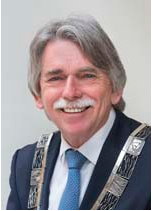
Mayor: Gerard Beukema
Gerard Beukema ( Noordbroek , October 30, 1952 ) is a Dutch director and politician of the PvdA . Since October 1, 2015 he is acting mayor of the municipality of Delfzijl.
Contact details
Visit: J. van den Kornputplein 10
Post: PO Box 20000, 9930 PA
Tel: 14 0596 (area code is not required)
Fax: (0596) 63 07 12
Email: gemeente@delfzijl.nl
calling from abroad
Tel: 0031 596 63 99 11
Facebook: gemeente Delfzijl @gemeenteDelfzijl
Twitter: Gemeente Delfzijl @Gem_Delfz
